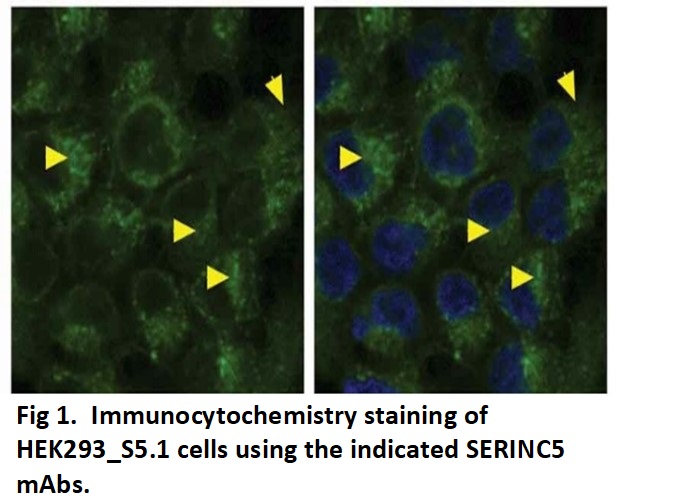Case ID:
HJF 525-18
Web Published:
3/23/2023
Serine incorporator 5 (SERINC5), is a host cell protein that has been shown to potently reduce HIV-1 infectivity. However, studies related to SERINC5 protein have been challenging due the dearth of high-quality SERINC5-specific monoclonal antibodies (mAbs).
Researchers at the Walter Reed Army Institute of Research (WRAIR) and the Henry M. Jackson Foundation for Military Medicine (HJF) have developed novel, specific SERINC5 mAbs. These antibodies (Abs) are valuable reagents for SERINC5 related research in different cell lines.
Applications and Advantages
- Detection tools: Highly specific and sensitive mAbs to identify and quantify SERINC5
- Mechanistic tools : Enable SERINC5 function studies in HIV-1 restriction, neuroscience and cancer
- Therapeutic tools : Serve as lead mAbs for further development of therapeutics
- Utility: Can be used with standard Immunological techniques: Flow Cytometry, Western Blot, Immunocytochemistry
Innovation Description
SERINC5 is a transmembrane protein known to restrict HIV-1 infection. Studies have shown that its isoform, SERINC5.1 is incorporated in virion particles and in the absence of a functional nef gene, makes the virus more sensitive to neutralization by Abs.
However, studies related to SERINC5 have been challenging due to its complicated protein structure, and difficulty of recognition by available polyclonal Abs. While the need for SERINC5 specific mAbs for research studies has been widely recognized, few mAbs have been available thus far. As a result, immunoassay development to facilitate detection and functional characterization of this protein has been limited.

Researchers at WRAIR and HJF have developed specific Abs that detect SERINC5 in the culture fluids of HIV-1 infected cells, suggesting that these mAbs recognize virion-associated SERINC5. These Abs target unique peptide sequences on three distinctive loop regions of SERINC5. They are valuable tools to study mechanisms of SERINC5 action, including role in HIV-1 restriction, neuronal plasticity, and lipid rafts in cancer. Additionally, these mAbs could potentially be engineered for use as therapeutic tools or for commercial recombinant protein expression.
Utility of these mAbs in immunological techniques such as Flow cytometry (FC), Immunocytochemistry (ICC) and Western blot analysis (WB) has been demonstrated. Fig. 1 shows cell plasma membrane localization of SERINC5 (green fluorescence) using ICC.
Inventors
- Victoria R. Polonis, Ph.D. WRAIR
- Michael Gordon Joyce, Ph.D. HJF
- Molar Mark Sebastian, HJF
- Lindsay Wieczorek, HJF
Innovation Status
Hybridomas and mAbs available for licensing as research tools, mAb sequences available for commercialization. Please see MABS, 2020 (12), 1.
Intellectual Property Status
Licensed as a biological material or research tool